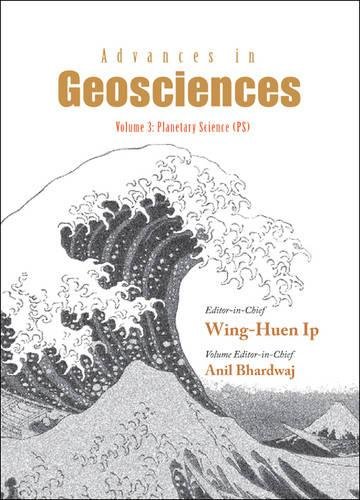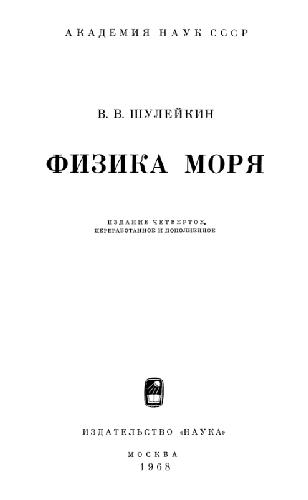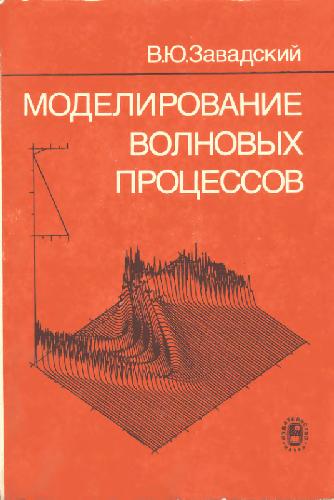Wing-huen Ip (editor), Anil Bhardwaj (editor)9789812564566, 981256456X
Table of contents :
Contents……Page 10
Editors……Page 6
Reviewers……Page 8
1. Introduction……Page 16
2. Origins of Mercury’s Craters……Page 17
3. Secondary Cratering……Page 18
References……Page 19
1. Introduction……Page 20
2. Exospheric Composition……Page 21
3. Sources of Variation of Mercury’s Exosphere Content……Page 22
3.1. Variation due to Mercury’s orbit……Page 23
3.2.1. Solar wind penetration……Page 24
3.2.3. Magnetospheric recycling……Page 25
3.3.1. Migration of the volatiles……Page 26
4. Conclusions……Page 28
References……Page 29
1. Introduction……Page 32
2. Adiabaticity Breaking Due to Small Spatial Scales……Page 33
3. Adiabaticity Breaking Due to Small Temporal Scales……Page 38
References……Page 42
1. Introduction……Page 44
2. Open Field Regions……Page 46
3. Plasma Penetration into Mercury’s Dayside Magnetosphere……Page 47
4. Conclusions……Page 49
References……Page 50
1. Introduction……Page 52
2. Proton Circulation Model……Page 53
3. ENA Simulations……Page 56
4. ELENA Sensor……Page 57
5. ENA Imaging……Page 59
6. Summary and Conclusions……Page 62
References……Page 64
1. Introduction……Page 66
2.2. The Mercury planetary orbiter……Page 68
2.3. Payload……Page 69
2.4.1. Spectrometer and imagers for MPO BepiColombo integrated observatory system……Page 71
2.4.4. The solar intensity X-ray and particle spectrometer……Page 72
2.4.6. Search for exospheric refilling and emitted natural abundances……Page 73
2.4.8. Mercury magnetometer……Page 74
2.4.10. Italian spring accelerometer……Page 75
References……Page 76
1. Introduction……Page 78
2.2. ULF pulsations……Page 79
2.5. Current closure……Page 81
2.6. Magnetospheric compressibility……Page 82
2.9.1. LF and MF waves……Page 83
References……Page 84
Plasma/Radio Wave Observations at Mercury by the Bepicolombo MMO Spacecraft H. Matsumoto, J.-L. Bougeret, L. G. Blomberg, H. Kojima, S. Yagitani, Y. Omura, M. Moncuquet, G. Chanteur, Y. Kasaba, J.-G. Trotignon, Y. Kasahara and Bepicolombo MMO PWI Team……Page 86
1. Introduction……Page 87
2.1.3. Global profile of density and temperature……Page 88
2.2.3. Magnetosphere–exosphere coupling……Page 89
2.4.1. Nonlinear kinetic processes……Page 90
2.5.2. Stereoscopic observation……Page 91
3. Instrument Design……Page 92
3.1. Sensors for electric field and magnetic field……Page 93
3.2. Receivers for electric field and magnetic field……Page 94
4.1. Electric field detection: from DC to 10MHz……Page 96
5. Summary……Page 97
References……Page 98
1. Introduction……Page 100
2. Mercury Ion Analyzer……Page 102
3. Measurement Principle of MIA……Page 103
4. Design of MIA……Page 104
References……Page 106
1. Introduction……Page 108
2. Volatile Evolution in Permanent Shadowed Regions……Page 109
3.1. Mercury……Page 110
3.2. Moon……Page 112
4. Conclusions……Page 113
References……Page 114
1. Introduction……Page 116
2. Overview of TC Mission Objectives and Specification of TC……Page 117
3. Overview of SELENE/TC Operation……Page 119
4.1. Level 2A processing system……Page 120
4.2. Radiometric calibration and geometric correction system……Page 121
5. Conclusion……Page 122
References……Page 123
1. Introduction……Page 124
2. Photochemical Model……Page 126
3. Model Results……Page 127
4. Discussion……Page 129
5. Conclusions and Recommendations……Page 130
References……Page 131
1. Introduction……Page 134
2. Background……Page 135
3. Observations……Page 140
4. Analysis……Page 141
Appendix A. NPI Angular and Energy Response……Page 145
References……Page 148
1. Introduction……Page 150
2. Data Analysis……Page 151
3. Results……Page 152
4. Discussion and Summary……Page 155
References……Page 157
1. Introduction……Page 160
2. Model Description……Page 162
3. Model Results……Page 164
4. Discussion……Page 167
References……Page 168
1. Introduction……Page 170
2. Grain Agglomeration and Planetesimal Formation……Page 171
3. Collisional and Thermal Evolution of Cometary Nuclei……Page 174
4.1. Non-gravitational force modeling……Page 177
4.3. Rotational stability……Page 178
4.4. Radar observations……Page 179
4.6. Binary Edgeworth-Kuiper objects……Page 180
5. Conclusions……Page 181
References……Page 182
1. Introduction: State of Art……Page 186
2. The UVCS Sungrazer Emission: Main Properties……Page 188
3. The Origin of the Observed Lyα Sungrazer Emission……Page 189
4. Estimate of Sungrazers Outgassing Rate and Nucleus Size……Page 191
5. Ultraviolet Coronagraph Spectrometer Observation of C/2002 S2: First Results……Page 195
6. Conclusions……Page 197
References……Page 198
2. Observations and Magnitude Analysis……Page 200
3.1. Light curves……Page 201
3.3. Secular brightness variations……Page 202
Acknowledgments……Page 203
References……Page 204
1. Introduction……Page 206
2.1. The model……Page 207
2.2. The adaptive mesh refinement technique……Page 209
3. Modeling of a Halley-Type Comet……Page 210
Acknowledgments……Page 216
References……Page 217
1. Introduction……Page 218
2. XMM-Newton Observations: Lightcurves……Page 220
3. XMM-Newton Spectral Images……Page 223
4. XMM-Newton EPIC and RGS Spectra……Page 225
Acknowledgments……Page 228
References……Page 229
1. Introduction……Page 230
2. Earth: Auroral Emissions……Page 231
3. Earth: Non-Auroral Disk Emissions……Page 233
4. Jupiter: Auroral Emissions……Page 234
5. Jupiter: Low-Latitude Disk Emissions……Page 238
6. Saturn……Page 239
7. Discussion……Page 240
References……Page 243
1. Introduction……Page 246
3.1. Scientific objectives……Page 247
3.2. Design concept of the XRS……Page 248
4.1. Event extraction……Page 250
6. In-Flight Experiments……Page 251
7. Conclusions……Page 254
References……Page 255
A Mission Called SAPPORO W.-H. Ip, I.-G. Jiang, D. Kinoshita, L. N. Hau, A. Fujiwara, Y. Saito, F. Yoshida, K. W. Min, Anil Bhardwaj, H. Boehnhardt, P. Hartogh, T. M. Capria, G. Cremonese, A. Milillo, S. Orisini, D. Gautier, D. Jewitt and T. Owen……Page 256
1. Introduction……Page 257
2.1. Saturn atmospheric probe……Page 258
2.2. The microwave sounder……Page 260
2.3. The Phoebe rover or penetrators……Page 262
2.4. The ring hopper/smasher……Page 263
2.5. The cruise and magnetosphere science……Page 264
4. Discussion……Page 265
References……Page 267
1. Introduction……Page 270
2.1. Meteors……Page 271
2.3. Meteor observations from space……Page 273
2.4. Lightning……Page 275
2.5. Sprites……Page 276
2.7. Elves……Page 277
3. Planetary Phenomena……Page 278
3.2. Meteors on Venus……Page 279
4. Impact Flashes……Page 280
5.1. Observation of Mars lightning……Page 282
5.2. Observation of Jupiter lightning……Page 283
References……Page 284
1. Introduction……Page 286
2. How the Impedance Probe is Working……Page 287
3. Representative Quadripole Impedance Probes……Page 289
4. Conclusion……Page 292
References……Page 293
1. Introduction……Page 296
3. Results……Page 297
4. Discussion……Page 300
References……Page 301
Understanding the Origin of the Asteroids Through the Study of Vesta and Ceres: The Role of Dawn Alberto Cellino, Fabrizio Capaccioni, Maria Teresa Capria, Angioletta Coradini, Maria Cristina De Sanctis, Horst U. Keller, Thomas H. Prettyman, Carol A. Raymond
and Christopher T. Russell……Page 302
1. Introduction……Page 303
2. The Ceres–Vesta Paradox……Page 304
3. Dawn: A General Outline……Page 309
4. Current Status of the Mission and Conclusions……Page 311
References……Page 312
1. Introduction……Page 314
2. The Measurement of Sizes……Page 317
3. Determination of Spin Properties……Page 322
4. Taxonomic Classification……Page 328
5. Conclusions……Page 329
References……Page 330
1. Introduction……Page 332
2. Lightcurves of the Karin Family Asteroids……Page 333
3.1. Observation procedure……Page 334
3.2. Observation results……Page 338
4.1. Interpretation of the observing results……Page 340
4.2. Future observation……Page 342
References……Page 343
1. Introduction……Page 346
3. Results……Page 347
4. Discussions……Page 349
5. Planning for Re-observation……Page 350
References……Page 351
1. Introduction……Page 352
2. Crater SFDs……Page 353
4. Discussion……Page 355
References……Page 358
Status of the TAOS Project and a Simulator for TNO Occultation Sun-Kun King, Charles Alcock, Tim Axelrod, Federica B. Bianco, Yong-Ik Byun, Wen-Ping Chen, Kem H. Cook, Yung-Hsin Chang, Rahul Dave, Joseph Giammarco, Typhoon Lee, Matthew Lehner, Jack Lissauer, Stuart Marshall, Soumen Mondal, Imke De Pater,
Rodin Porrata, John Rice, Megan E. Schwamb, Andrew Wang,
Shiang-Yu Wang, Chih-Yi Wen and Zhi-Wei Zhang……Page 360
1. Introduction……Page 361
2. Taiwan-America Occultation Survey Status and Zipper Mode Test……Page 362
3. A Simulator for TNO Occultation Survey……Page 367
4. Perspectives……Page 371
References……Page 372
1. The Historical Asteroid Survey in China……Page 374
2.1. Scientific objectives……Page 375
3. “Auto-Navigation for NEO Exploration” Proposal……Page 377
References……Page 379
1. Introduction……Page 382
2.1. Observation……Page 384
2.2.1. Learning from SoHO observation……Page 385
2.2.2. In anticipation of the IBEX mission……Page 387
3. Conclusion……Page 388
References……Page 389
1. Introduction……Page 392
2.1.1. 0.05 AU a < 0.4 AU……Page 395
2.1.2. 0.4 AU a < 1.0 AU……Page 396
2.1.3. 1.0 AU a < 1.3 AU……Page 398
2.1.4. 1.3 AU a 1.6 AU……Page 399
2.1.5. 1.6 AU < a 2.0 AU……Page 400
3. Summary and Discussions……Page 401
References……Page 402
1. Introduction……Page 404
2. JAXA Vision — JAXA 2025 —……Page 405
3.1.1. Sun and Sun–Earth system……Page 406
3.1.2. Initiation of the surveys of terrestrial objects: Moon, Venus, and Mercury……Page 407
3.2.1. Sun and Sun–Earth system……Page 409
3.2.2. Detailed studies for Mars and Venus……Page 410
3.2.4. Small spacecraft……Page 411
4. Summary……Page 412
References……Page 413







Reviews
There are no reviews yet.